Curly hair may have a reputation for being hard to manage, but that’s only if you don’t have the right information and tools in place to do so. With the right TLC, curls can be smooth, defined and shiny, not to mention easy to style. A key part of figuring out how to care for your curls is identifying and understanding your curl type.
Your curl type is a classification of the shape, diameter and density of your curls, and can help you determine what products you should use and how to style it. Below we break down how to figure out your curl type and the best curly hair products you’ll need to care for your curls.
SKIP AHEAD Why knowing your curl type is important | How to identify your curl type | Type 2 curls | Type 3 curls | Type 4 curls
Why knowing your curl type is important
Consider your curl type a guide to your hair care routine. “Each curl type requires different maintenance when it comes to product, heat application and moisture,” says celebrity hairstylist Larry Sims.
The products can be particularly important, since they can make or break your overall look as well as impact your hair health. For instance, “if you have thick, coarse curls, it is important to look for products that are heavy enough so that your curls can absorb the ingredients and the product can fulfill its purpose,” says Kee Taylor, hairstylist and founder of Deeper Than Hair salon in Philadelphia, PA. On the other hand, she says, if you have thinner or looser waves, you should avoid formulas that feel thick or heavy, so “they don’t weigh your hair down and lead to oily or greasy strands.”
That said, curl types should not be the end-all, be-all in deciding how you care for hair. The classification system puts emphasis on what your curl shape looks like as compared to how frizzy your hair is or if your curls lack definition, says April Kayganich, a hairstylist and educator based in Los Angeles, CA. So, if you find that you have Type 2A curls with a lot of frizz, you might want to adjust your styling routine accordingly.
How to identify your curl type
Your hair follicles are the primary influence on your curl type. “The way the hair emerges from the follicle will determine the shape and pattern of the strand, and tell you what kind of hair type you have,” says Taylor.
There’s more to identifying that shape and pattern than quickly glancing in the mirror. It’s easiest to determine your curl type when your hair is wet, according to Sophie Rose Gutterman, a hairstylist based in Los Angeles, CA; this is when hair is in its natural state. “I would recommend brushing with a conditioner in your hair, then rinsing,” she says. “Your curl pattern will start to take form.”
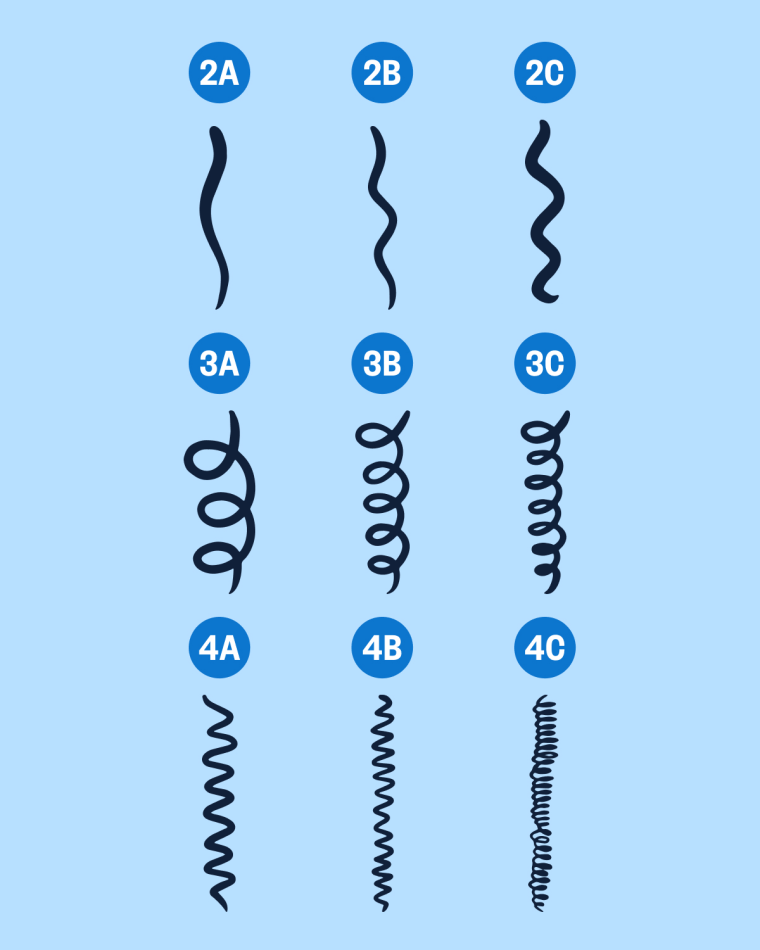
If you have straight hair you have Type 1 hair — or, in other words, no curls. “Type 2 curls are more wavy, and Type 3 curls are more curly,” says Taylor. “If you have coily strands, then you have Type 4 curls.”
These types of curls are then broken down into subcategories A, B and C; this classification is based on the width of the curl, she says. Below, we’ll share exactly what makes each curl type distinct, and how best to take care of it.
Type 2 curls (wavy hair)
Type 2 curls, or wavy hair, are the loosest of the curl patterns and often easier to manage than Types 3 or 4, says Nika Pearl-Edwards, hairstylist at Rob Peetoom Salon in Williamsburg, NY. It tends to benefit from lightweight products that won’t weigh down these waves and stretch them out, which eliminates any definition, according to Pearl-Edwards.
Type 2A curls
The loosest of all the curl types, Type 2A hair will usually “not form a full curl, but appears more as a slight bend in the hair,” says Pearl-Edwards. “I find people with 2A hair often consider their hair ‘straight’ or don’t know that their hair can wave or bend."
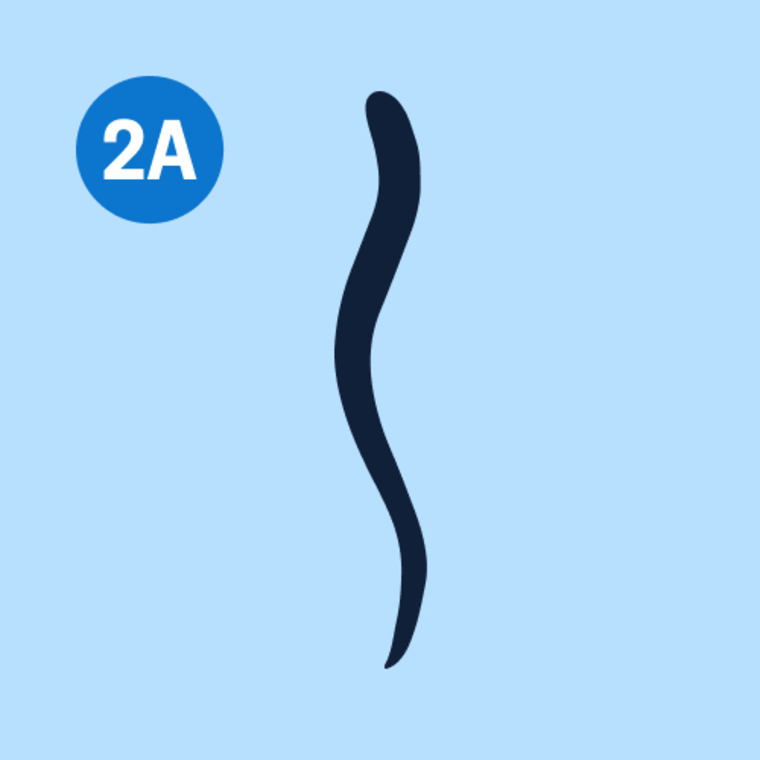
Frizz typically isn’t an issue if you have Type 2A hair, but it’s possible for the waves to stretch out and disappear if you incorporate styling products into your hair. Gutterman recommends avoiding heavy hair oils and moisturizing creams; they will weigh it down and straighten out the waves.
Instead, she recommends enhancing waves by applying a leave-in conditioner throughout hair, followed by a lightweight gel you scrunch in with your hands. “The gel will provide extra hold and hopefully give your curls some bounce.”
Type 2B curls
This is where assessing hair when damp can be especially helpful. “2B hair may appear wavy even when wet,” says Pearl-Edwards. “The curl pattern will often look like a continuous S shape and will shrink when dry.” Unlike Type 2A hair, you have to make more of an effort to straighten it, like blow-drying it with a round brush.

Heavy moisturizers and hair oils will again add weight to this hair type. However, “if your hair is feeling dry and you want to hydrate hair, try applying products only to the ends,” says Gutterman. You can also add extra definition to your hair by diffusing it, which will also boost volume and minimize frizz. “Try moving your hair to dry it in different directions — upside down and side to side,” she says. For more defined waves, Pearl-Edwards recommends using a small brush while you dry your hair to shape them.
Type 2C curls
This is almost a true curl. “The hair will most likely bounce up in the shower even when wet, and may start to form a tighter S shape,” says Pearl-Edwards. It’s also the type where you may notice frizz form, which is where additional hydration can be helpful.

She advises using a small, flat brush to detangle hair after shampooing and to apply conditioner throughout with your hands. Then, add in a styling product, avoiding those with alcohol, which can dry out hair. “Go for something like a cream that has an oil in it to control the frizz versus using a gel,” says Gutterman. Then, once curls are dry — either by diffusing them or air-drying — gently break them up with your hands.
Type 3 curls (curly hair)
These are “true” curls, and what you might think of when you picture curly hair. They’re defined by their ringlet shape — forming actual spirals — and offer natural volume and bounce. However, they tend to be more prone to dryness and frizz, which means maintaining and adding moisture is a must.
Type 3A curls
These are typically S-shaped spirals with a relatively large diameter, says Brittany Johnson, a hairstylist based in San Francisco, CA. “Think sidewalk chalk-sized spirals.” Unless your hair is very coarse or dense, she says that it’s important to avoid products that are too heavy, which can prevent curls from properly forming and make it hard to retain volume and lift.

Sims recommends washing weekly with a sulfate-free shampoo (since sulfates can be drying) and a lightweight conditioner. Then, for styling, try a combination of either a leave-in conditioner or cream and a mousse “for a bit of hold that’s lighter than gel,” says Johnson. Use a wide-tooth comb to incorporate styling products through your hair to ensure it’s properly saturated and evenly coated.
Type 3B curls
Type 3B curls are well-defined ringlets that are C- or S-shaped, and their diameter is similar to a finger or marker, says Johnson. They tend to bounce off each other, which contributes to a more voluminous look than other curl types.
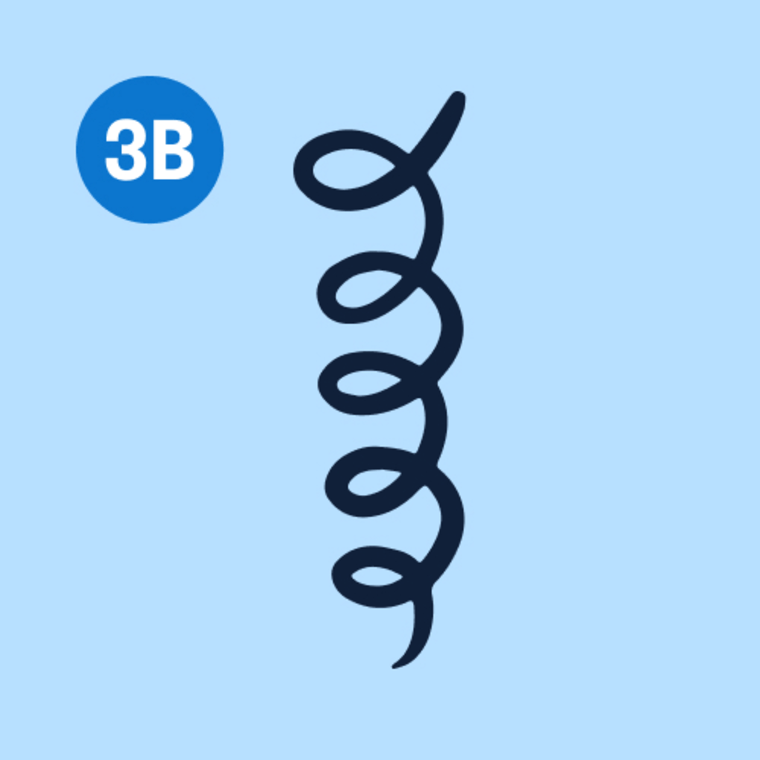
“Because this curl type can be a mix of various curls and coils, pay attention to the different areas of your head — is your hairline a different texture than the rest of your hair? Do you have tighter curls in the back of your head?” she says. “Even if the majority of your hair is 3B, don’t be afraid to use different products or methods in the same styling session.”
For Type 3B curls, she recommends cleansing conditioners, or a co-wash, supplemented with a regular shampoo every one or two works to deep-clean the scalp of product build-up. For styling, Sims points to leave-in conditioners and oil-based detanglers, which can help keep curls hydrated and smooth. Finally, only style your hair when it’s wet, then consider it hands-off once they’ve dried. “This curl type is sensitive to frizzing, so avoid over-manipulating the hair to keep the curls intact,” he says.
Type 3C curls
“3C curls have more of a coil or corkscrew appearance and are about the width of a pencil,” says Sims. “They are very small, tightly curled and densely packed together.” Frizz, dryness and tangling are the most common concerns among this hair type; in fact, Type 3C curls are where you might start to see fairy knots, which are “single strand knots that happen when the hair strand creates a knot within itself,” says Johnson.

Careful detangling is key, as is protecting hair while you sleep with a silk or satin pillowcase, scarf or bonnet; these help prevent friction. Johnson also recommends the product-layering technique known as LCO, which stands for leave-in conditioner and oil. “Make sure your hair is saturated with enough water before layering your products,” she says. “It should be fairly damp, but not so soaking wet that it can’t absorb any products.”
Type 4 curls (coily hair)
Also known as textured hair, Type 4 curls tend to be so tightly curled that they’re often called coils. “Type 4 curls are more of a kinky coil, and have more volume and height than Types 2 and 3,” says Taylor; they often can be shaped more like zig-zags (think z-shape instead of s-shape). This hair type is very dry, too, so it’s fragile and prone to breakage — making gentle, nourishing care essential.
Type 4A curls
This hair type has springy, S-shaped and densely packed coils, and they tend to have more definition and moisture than other Type 4 curls. “Each strand is independent of the others, giving this hair type its specific density and volume,” says Taylor.
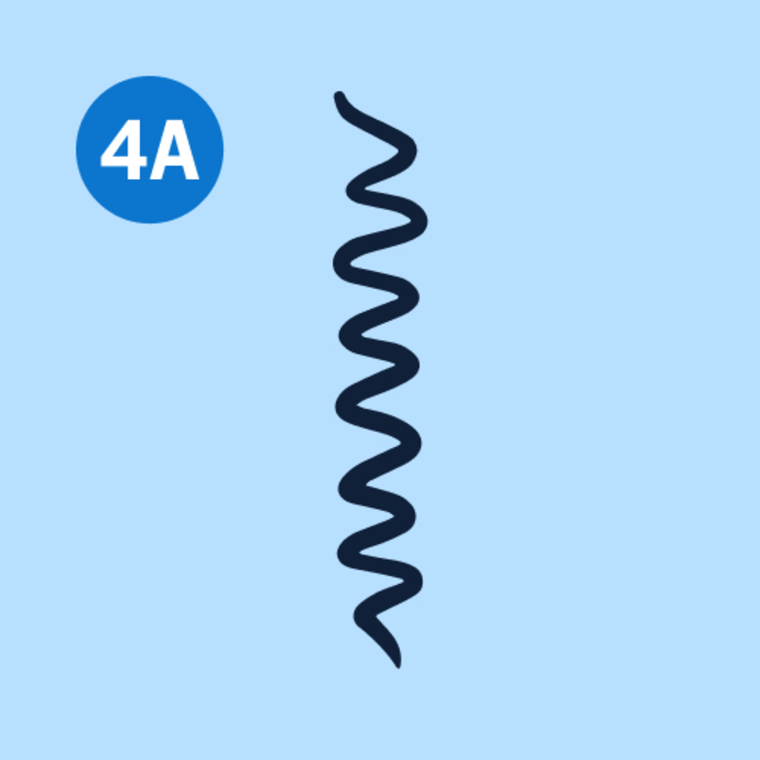
In addition to leave-in treatments and oils, she recommends using deep conditioning masks on a regular basis and avoiding hot tools, which can further dry out and damage this hair type. For styling, meanwhile, consider trying a protective hairstyle, which reduces tension on the scalp to minimize hair loss and breakage; she’s especially fond of bantu knots.
Type 4B curls
This curl type can sometimes be in a zig-zag pattern, says Kayganich, which can contribute to its notable dryness. “The tighter the curl, the harder it is for your natural oils to make their way all the way to the ends of the hair due to the shape of the cuticle,” she explains.

Moisture is still important for that reason. But when you’re shopping for products, avoid formulas that have silicone (which can appear as “dimethicone” on ingredient lists). “Silicones are known to add buildup on the hair, which is not ideal for this hair type since the most common way to remove silicone is through sulfates — which results in more dryness,” says Taylor. In other words, it traps you in a cycle of creating buildup and stripping away moisture.
Type 4C curls
These curls are very similar to type 4B curls, but are even more tightly coiled and fragile — so much so that the individual curls can be almost unrecognizable to the eye. Their shape may veer into zig-zags as well, says Taylor, and they require the most amount of moisture of any curl type, too. “One of the most common attributes of this hair type is its shrinkage, which is when the hair appears shorter than it actually is,” she adds.
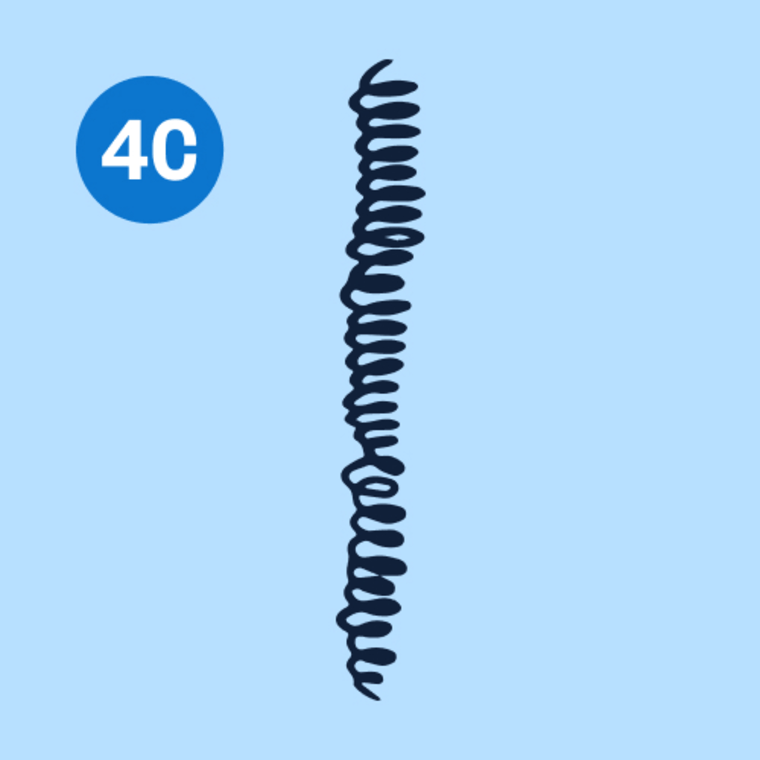
“For this specific hair type, wash-and-go is the best way for an easy look while still maintaining your hair health,” she says. (It’s exactly what it sounds like: Simply wash, apply products and let it air dry.) Protective styles can also prevent breakage and heat damage. “I love two-strand twists and braid-outs for this hair type since they’re easy to achieve on your own at home,” she says.
Meet our experts
At Select, we work with experts who have specialized knowledge and authority based on relevant training and/or experience. We also take steps to ensure all expert advice and recommendations are made independently and without undisclosed financial conflicts of interest.
- Larry Sims is a celebrity hairstylist and cofounder of Flawless by Gabrielle Union, a line of hair products for textured hair.
- Kee Taylor is a hairstylist and founder of Deeper Than Hair salon in Philadelphia, PA. She specializes in natural hair textures and damaged hair.
- April Kayganich is a hairstylist and educator based in Los Angeles, CA. She specializes in textured hair and curls.
- Nika Pearl-Edwards is a hairstylist at Rob Peetoom Salon in Williamsburg, NY.
- Sophie Rose Gutterman is a hairstylist based in Los Angeles, CA.
- Brittany Johnson is a hairstylist based in San Francisco, CA, and a marketing manager at Mayvenn Hair, a wig company.
Why trust Select?
Deanna Pai is a freelance beauty writer and editor who has been covering beauty and health for more than a decade, including co-washes and brushes and combs. She has Types 2C and 3A curls, which she air-dries exclusively, and interviewed six curl experts to learn how to make the most of your curl types.
Catch up on Select’s in-depth coverage of personal finance, tech and tools, wellness and more, and follow us on Facebook, Instagram, Twitter and TikTok to stay up to date.
"type" - Google News
December 12, 2023 at 01:00AM
https://ift.tt/B5yxNdG
How to find your curl type, according to experts - NBC News
"type" - Google News
https://ift.tt/rJyUiPW
https://ift.tt/RjJCc2O
Bagikan Berita Ini














0 Response to "How to find your curl type, according to experts - NBC News"
Post a Comment